Regenerative agriculture is in Dean’s DNA. Charleville, South West Queensland born and raised, Dean joined TEM as Carbon Project Land Manager for the opportunity to apply his skills learnt while working in West Queensland in soil carbon to regenerative land management closer to home. With a background in stock management and agriculture, Dean believes understanding the nature of the land is key and advises that we need to “hurry up and go slow” in order to make progress, ensuring we act with urgency, but in a careful and considered way.
Native Forest Regeneration projects also known as Human Induced Regeneration (HIR) play a role in restoring landscapes subject to specific types of historical clearing, improving biodiversity, and contributing to carbon sequestration efforts. This methodology involves strategically managing the land by reducing activities that suppress the growth of vegetation, typically native Mulga trees. On paper, this is exactly what Dean does, currently managing six TEM-owned or operated properties spanning over 140,000 hectares of land.
But, what does a typical day look like for a Land Manager on a TEM carbon project? Some of the TEM team followed Dean for a week, visiting two TEM projects in South West Queensland to gain a unique insight into his day-to-day.
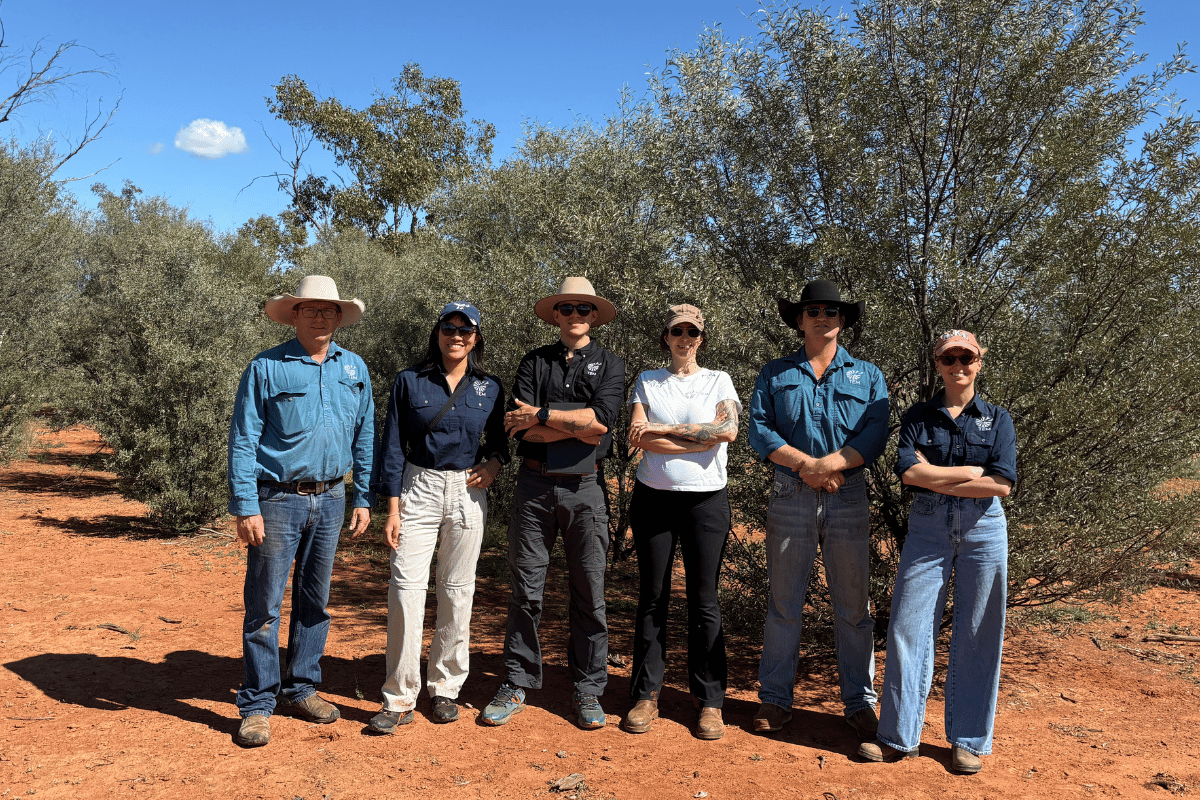
Behind the scenes: surveys and ground truthing
“These flies are pretty bad, eh?” said Dean, swatting at the buzzing cloud around his face. As we walked along the red dirt path lined with native Mulga trees, it became clear that in rural Queensland, complaining about the flies is the local equivalent of talking about the weather in Melbourne.
Dean is showing us around Wongamere one of our TEM owned and managed HIR carbon projects.
“Every day is different. I spend a lot of time planning, monitoring, reporting, supporting agistees and managing contractors, all while liaising with the community,” explains Dean.
“And then every six months we survey the land using a range of techniques including tree health monitoring, ground cover and photo monitoring and mapping,” he says.
Surveying involves on-site assessments to verify vegetation regrowth and carbon sequestration and to confirm what has been observed through satellite imagery. Dean conducts measurements of tree height, canopy cover and mapping activities to ensure accuracy in carbon accounting and validate the impact of land management changes. This process enhances data integrity and ensures compliance above and beyond methodology requirements.
“My favourite thing about regenerative techniques is that they are slow and steady, taking a conservative approach to give the best chance of success,” Dean shares.
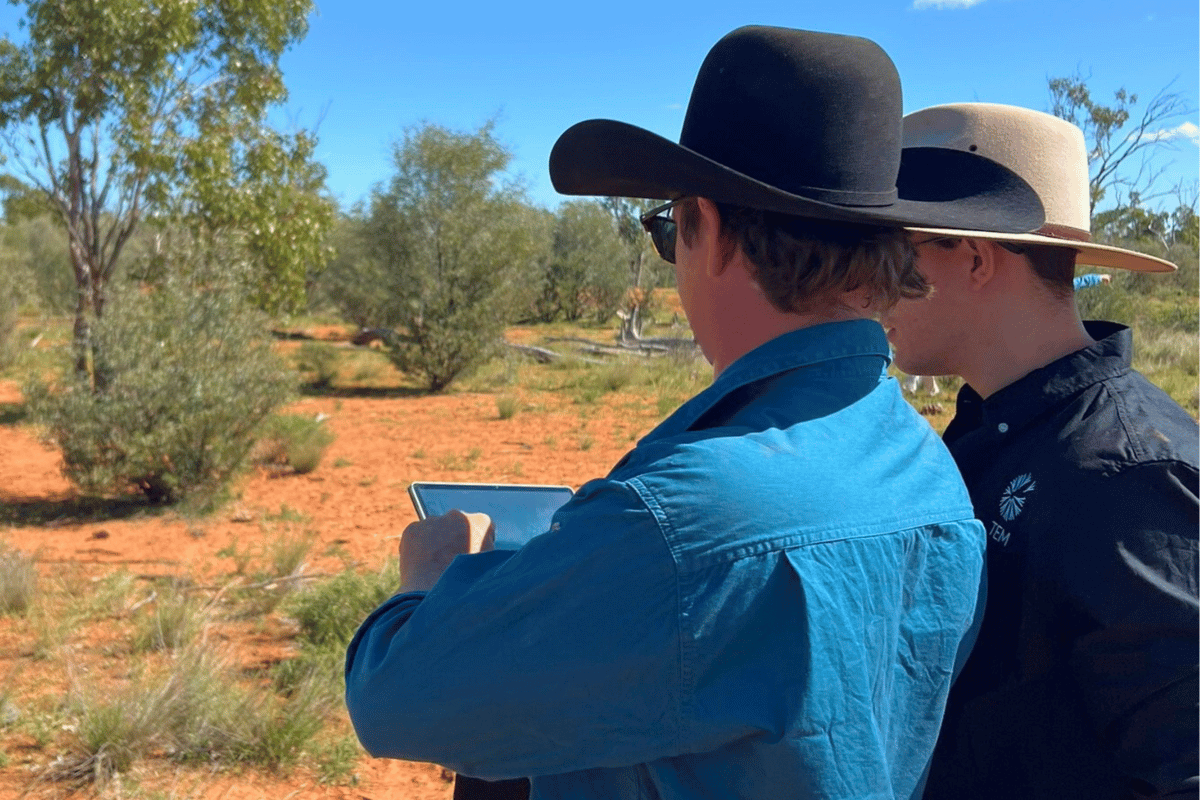
He goes on:
“We see the hard work pay off year-on-year, and the proof is in the pudding – the Mulga is flourishing, and I know that this would not have happened in these areas without TEM’s land management.”
Dean’s own journey into regenerative agriculture has shaped his approach.
“In a previous role when I was managing cattle, I noticed a gradual shift to a more regenerative way of thinking, and that really helped me when I first started my role with TEM,” Dean shares.
“At the end of the day, I care the most about looking after the land holistically for generations to come.” he says.
Other activities to protect the land and encourage growth in line with the project methodology include installing infrastructure such as fencing to exclude grazing in certain areas and maintain firebreaks to mitigate the risk of fire and increase the ability to quickly respond if needed.
Working with flora and fauna
While often alone when out on project land, Dean has many encounters with native Australian wildlife which adds another layer of considerations when it comes to the management of the land.
“The Emus are bloody everywhere at the moment which is a good sign of the seasons. We also see a lot of kangaroos and other marsupials, frogs in the wetland areas and a range of bird breeds including the pink cockatoo. To get the best outcomes for the land, we need to ensure our planning considers the right controls to reduce both the pest plants and feral animals therefore protecting native wildlife,” Dean explains.
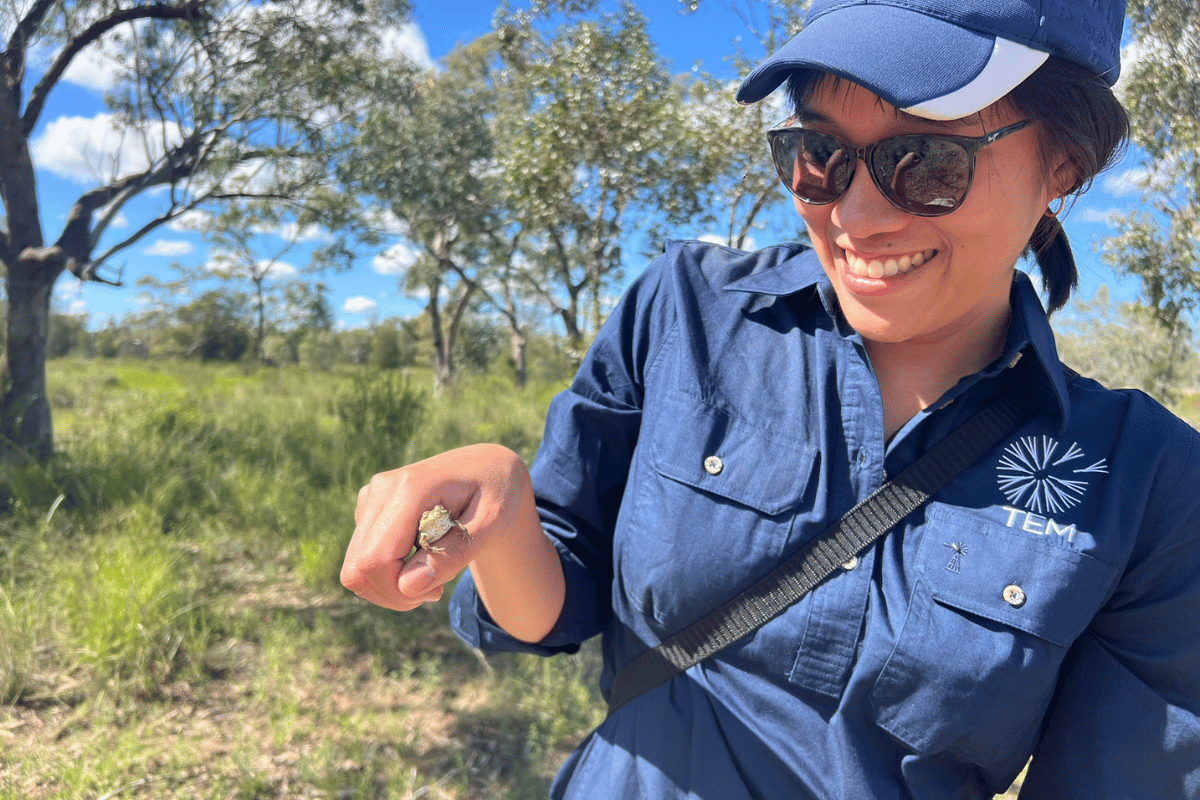
While we are nurturing forest growth, there are also a variety of pest plants which can choke out the Mulga tree and so management of these invasive species is key to promoting healthy forest growth.
Dean shows us an area on our Moama property which had experienced an outbreak of the invasive plant species, the Coral Cactus. He explained that in order to control the spread of it he introduced a cochineal insect, Dactylopius Tomentosus, a small sap-sucking bug that feeds exclusively on Coral Cactus, and in turn wiping it out from the area.
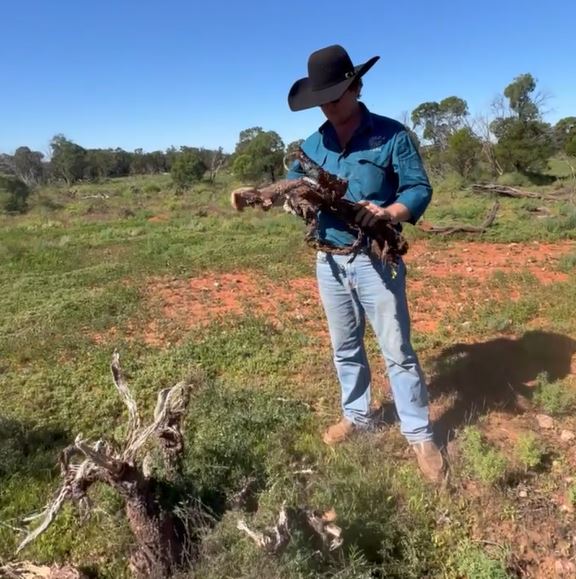
Above, Dean holds a dried out Coral Cactus after the Dactylopius Tomentosus worked its magic.
Working with the community and overcoming challenges
At their core, HIR projects are about caring for Country and embracing a regenerative approach to farming. We recently discussed our approach to our HIR projects emphasising the importance of integrative land management and thorough due diligence. In addition, TEM strives to prioritise local engagement which sees our team participating in community events, hiring local contractors, and sourcing materials from nearby suppliers as first priority.
“Carbon projects in rural Australia have been around for years, but there’s often a lack of widespread understanding of what they actually involve, which can lead people to assume the worst. My work with the community has helped them understand the real impact we’re making,” Dean explains.
Neighbours to TEM’s Moama property, Mary and Mac, kindly put us up in their homestead, Alroy Station and Campgrounds, for the night, sharing their experience on the land and working closely with Dean. They also explained their recent battle with a once in 100-year flood event where Mary spent the night on the dining room table to escape the flood waters.
Monitoring and preparing for weather events, in particular the management of fire is a crucial and challenging aspect of Dean’s role, and he works closely with local fire brigades to develop comprehensive fire management plans.
“Fire is our biggest enemy, but we’re prepared,” Dean explains.
“I work closely with the local rural Queensland Firies, producer members and fire wardens on our plans to ensure that we are all ready to act when needed, which helps minimise potential damage.”
TEM also utilses North Australia and Rangelands Fire Information (NAFI), a real-time fire monitoring system that uses satellite data to detect fires, map burnt areas, and support fire management for carbon projects and landholders.
“I’ve been able to log on to NAFI and see hotspots on our properties, allowing us to respond quickly – either through our agistees or local fire departments, depending on the severity,” Dean shares.
TEM’s comprehensive approach to fire management ensures that we stay proactive, adapting to changing and challenging conditions to achieve the best possible outcomes.
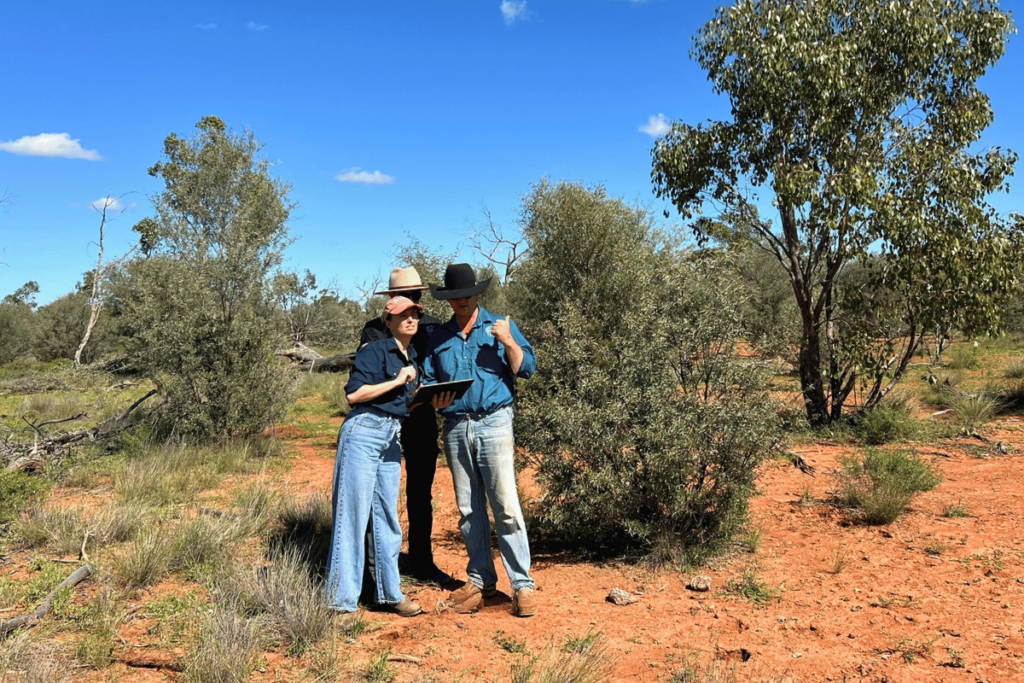
Looking ahead
While community engagement remains fundamental to TEM’s project operations, there’s a strong focus on formalising education efforts to build a deeper understanding within local communities.
“I really want to offer the local community more opportunities to connect with us and the work we do, facilitating open discussion where we can answer any questions they may have on the project and the industry as a whole.” Dean shares.
Dean notes that perceptions of regenerative carbon projects are gradually shifting as people learn more about the long-term benefits and think more holistically about the condition of the land for future generations.
The key lies in approaching community engagement with patience, transparency, and a commitment to factual, practical information about land management and environmental conservation. By integrating technological innovation, education, and strong community involvement, TEM is paving the way for sustainable, impactful change.
Learn more about our Human Induced Regeneration projects here.
Or contact us if you’d like to discuss your options.
Important information
This information has been prepared by Tasman Environmental Markets Australia Pty Ltd (TEM), a corporate authorised representative (ABN 97 659 245 011, CAR 001297708) of TEM Financial Services Pty Limited (ABN 58 142 268 479, AFSL 430036). This material is for general information only and is not intended to provide you with financial advice or take into account your objectives, financial situation, or needs. While we believe that the material is correct, no warranty of accuracy, reliability, or completeness is given, except for liability under statute which can’t be excluded. Before making an investment decision, you should first consider if the information is appropriate for your circumstances and seek professional financial advice. Please note past performance is not a guarantee of future performance.